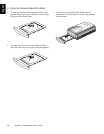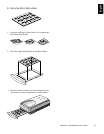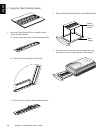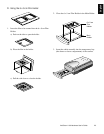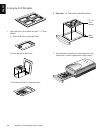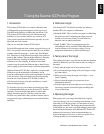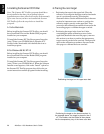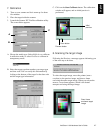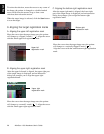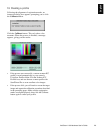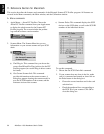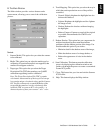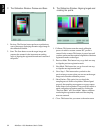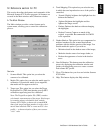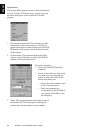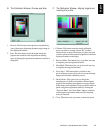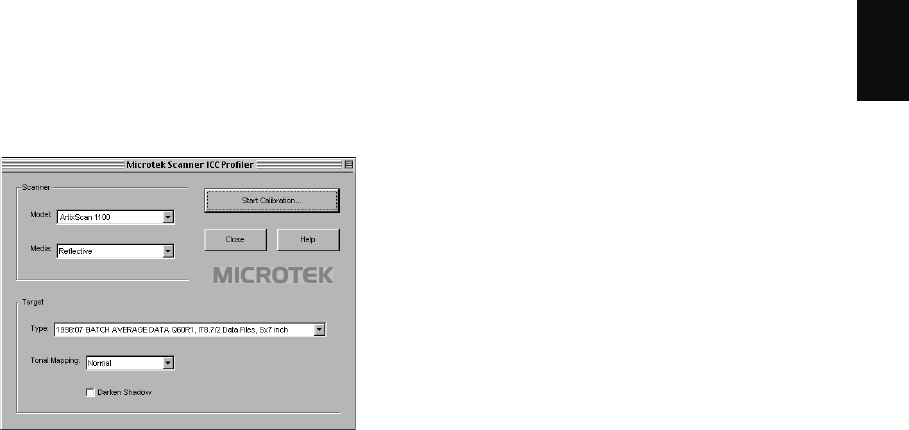
ArtixScan 1100 Hardware User’s Guide 31
English
B. The Main Window
The Main window provides various features and a
system menu, allowing you to control the calibration
process.
Controls:
1. Scanner Model: This option lets you select the scanner
to be calibrated.
2. Media: This option lets you select the media type for
calibration. If a particular media is not supported, that
media will not appear on the list.
3. Target type: This option lets you select the Target
Description File (TDF) that matches your Q-60E3
calibration target being used for calibration.
Note: The Target Description File (TDF) contains
colorimetric measurements of the target. Each target
lot contains unique colorimetric data, and the Scanner
ICC Profiler evaluates the scanned RGB data of the
target and then matches it to the colorimetric data
inside the TDF to create an ICC color profile — a
characterization of how your scanner “sees” color.
4. Tonal Mapping: This option lets you select the way in
which the tonal reproduction curve of the profile is
controlled.
• Normal: Slightly brightens the highlights but also
darkens the shadows.
• Lighten: Brightens the highlights and also lightens
the image overall.
• Darken: Darkens the shadows without changing
the highlights.
• Reduce Contrast: Captures as much of the original
as possible. Recommended for CMYK color
separation.
5. Darken Shadow: This option lets you compensate for
artifacts introduced by the scanner that indicate
problems with the shadow portion of the image. You
should enable this option if you wish to:
• Minimize detail in the shadow areas of the image;
• Make the shadow areas of an image darker; or
• Reduce the appearance of noise in the shadow
areas.
6. Start Calibration: This button starts the calibration
process by displaying the calibration window and
guides you through the process to create a customized
scanner ICC profile.
7. Close: This button lets you close and exit the Scanner
ICC Profiler.
8. Help: This button displays the Help window.



